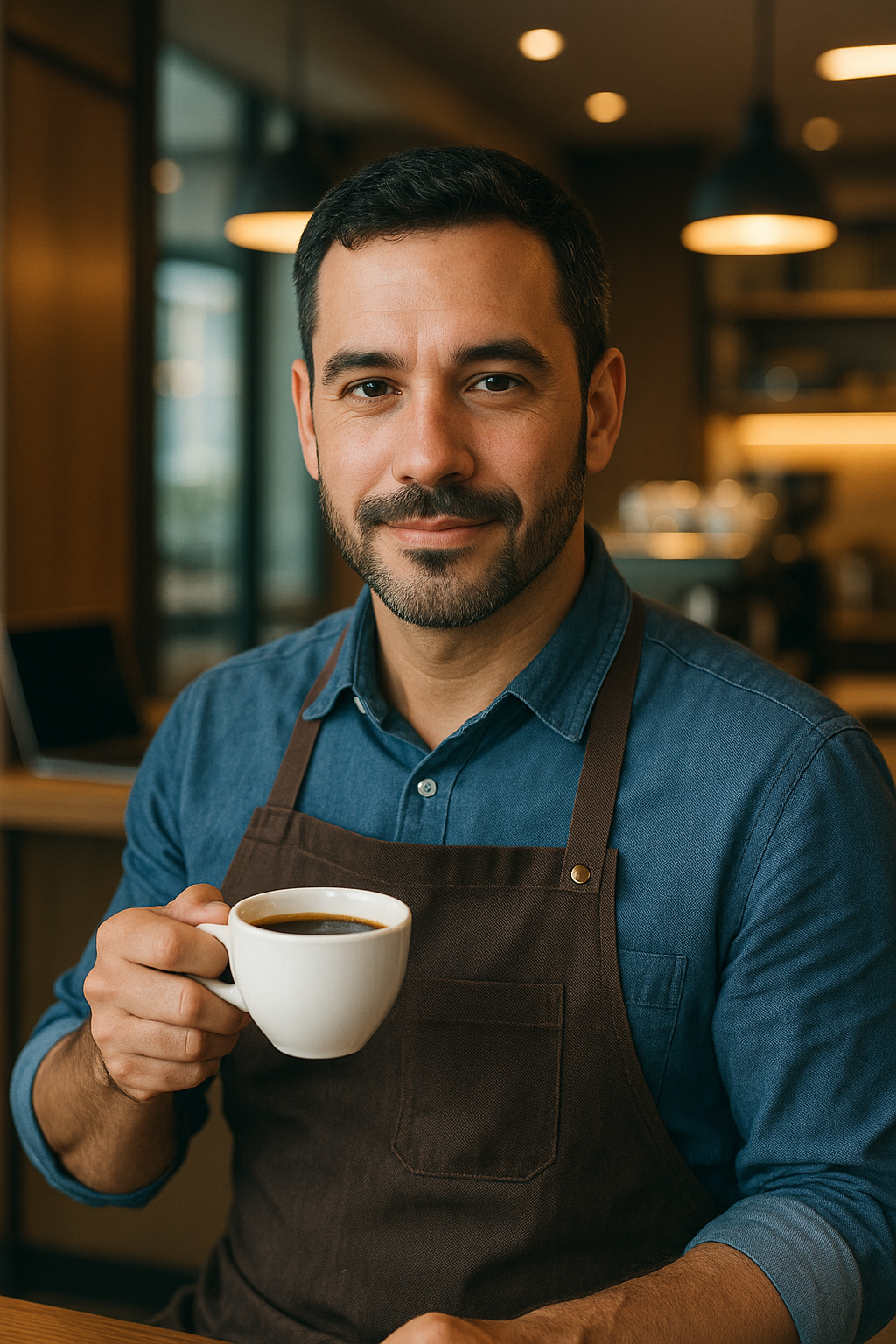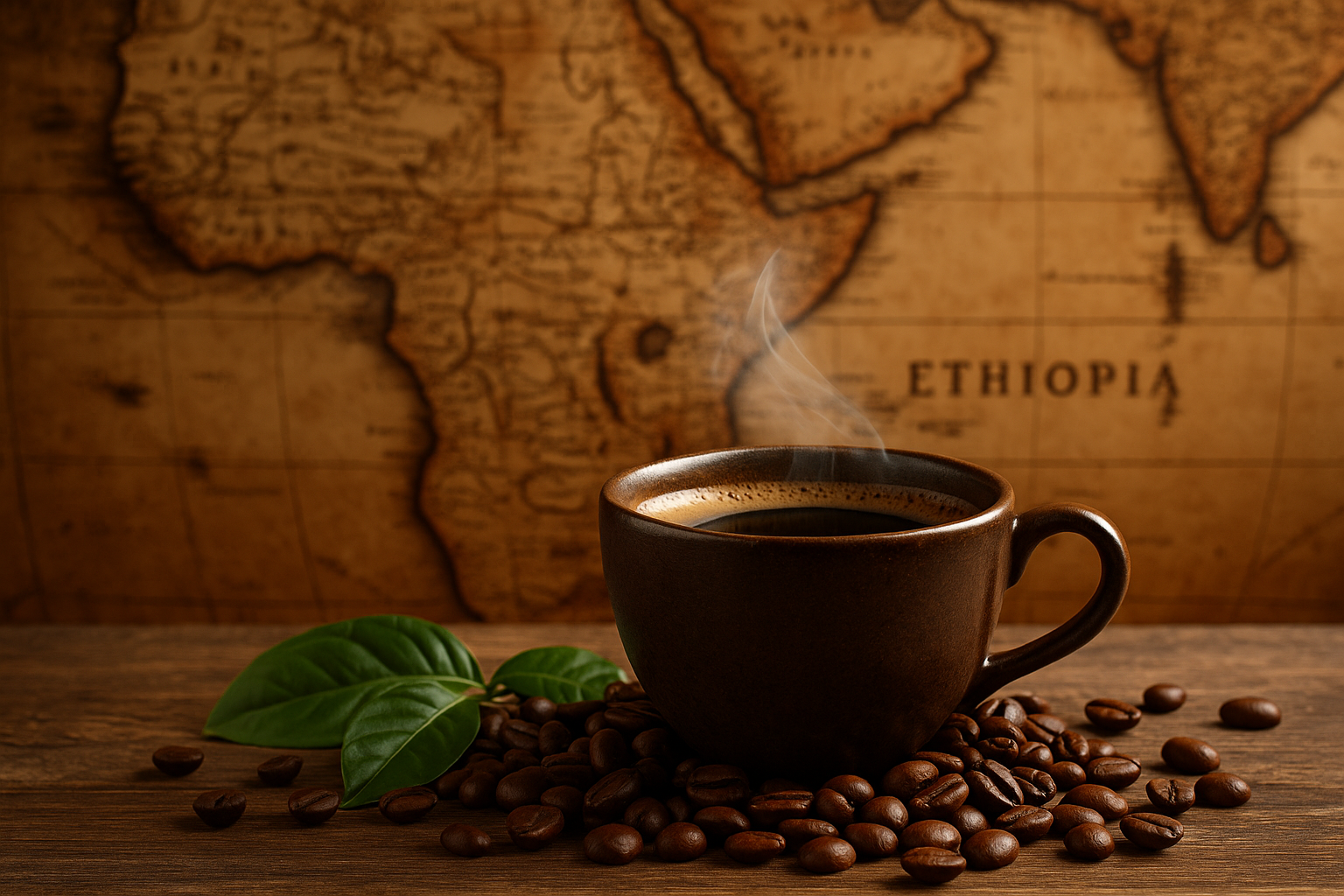Coffee is so deeply embedded in modern culture that it’s easy to forget it has a long, rich, and often surprising history.
The story of coffee spans continents and centuries, involving sultans, monks, merchants, and even revolutions.
In this article, we’ll journey through the evolution of coffee—from its legendary discovery in Ethiopia to its place in today’s global culture.
The Legend of Kaldi and the Dancing Goats
The earliest known origin story of coffee comes from Ethiopia, where legend tells of a goat herder named Kaldi. He noticed his goats became unusually energetic and wouldn’t sleep at night after eating the red berries of a certain shrub. Curious, Kaldi tried the berries himself and experienced a similar burst of energy.
A nearby monk saw Kaldi’s behavior and took the berries to his monastery. After boiling them into a drink, he and his fellow monks found that it helped them stay awake during evening prayers. Word of this energizing fruit quickly spread across the region.
Coffee Reaches the Arab World
Coffee’s journey from Ethiopia to the Arab world marked a major turning point. By the 15th century, coffee cultivation and trade were flourishing in Yemen. Sufi monks used the beverage to stay alert during their long hours of meditation. From Yemen, coffee made its way to Mecca and Medina, and then throughout the Islamic world.
The first coffeehouses, known as qahveh khaneh, opened in cities like Cairo, Istanbul, and Damascus. These establishments quickly became social, intellectual, and political hubs, earning nicknames like “Schools of the Wise.” In them, people gathered to listen to music, read poetry, play chess, and discuss ideas—often over a steaming cup of coffee.
The Ottoman Empire and the Rise of Turkish Coffee
During the 16th century, the Ottoman Empire played a crucial role in spreading coffee culture. Turkish coffee became a defining style—strong, unfiltered, and served in small cups. The Ottomans introduced coffee to Europe through trade and conquest, and the drink’s popularity soared.
In Istanbul, the coffeehouse culture exploded, and coffee became so essential that not providing it to one’s spouse was grounds for divorce. By this point, coffee was no longer just a stimulant—it was part of daily life, ceremony, and even romance.
Europe’s Coffee Craze
Coffee reached Europe in the 17th century, first through Venetian merchants. Initially viewed with suspicion (some even called it “the bitter invention of Satan”), coffee’s reputation improved when Pope Clement VIII tasted it and gave it his blessing.
Soon after, coffeehouses began popping up across Europe:
- In England, coffeehouses were dubbed “penny universities,” since for the price of a penny, anyone could join lively conversations about politics, science, and philosophy.
- In France, the Café Procope in Paris became a meeting place for intellectuals like Voltaire, Rousseau, and Diderot.
- In Austria, coffee was introduced after the defeat of the Ottoman Turks at the Battle of Vienna. The Austrians are credited with adding milk and sugar to coffee, a tradition that still defines Viennese cafés today.
Coffee and the Age of Enlightenment
Coffee played a subtle but powerful role in the Enlightenment era. In a time when alcohol was often the safer alternative to unclean water, coffee offered a clear-headed alternative. This helped fuel intellectual progress.
Coffeehouses became the unofficial offices of philosophers, writers, and revolutionaries. In England, the famous Lloyd’s of London began as a coffeehouse where ship captains and merchants met to discuss insurance. The American Revolution was partly brewed in coffeehouses like the Green Dragon Tavern in Boston.
Coffee and Colonialism
With its soaring popularity, European powers saw an opportunity to profit from coffee. They began cultivating coffee in their colonies, often under brutal conditions. The Dutch planted coffee in Java (Indonesia), the French in the Caribbean, the Spanish in Central America, and the Portuguese in Brazil.
This global expansion turned coffee into a major commodity and a driver of colonial economics. Unfortunately, this period also saw the exploitation of indigenous people and enslaved labor to fuel coffee’s rise.
The Birth of Brazilian Coffee Dominance
By the 19th century, Brazil emerged as the world’s top coffee producer—a title it still holds today. Legend has it that a Brazilian diplomat smuggled coffee seeds out of French Guiana, disguised in a bouquet given to him by the governor’s wife.
Brazil’s massive plantations and favorable climate allowed it to produce coffee at an unprecedented scale. By the 1840s, the country supplied over half of the world’s coffee, helping to cement it as a daily necessity across Europe and the Americas.
The Invention of Instant Coffee and Coffee Chains
The 20th century brought coffee to even more people through mass production and innovation. In 1901, Japanese-American chemist Satori Kato developed the first successful version of instant coffee, later commercialized by companies like Nescafé.
Post-World War II, coffee became a staple in homes and diners, particularly in the U.S., where “a cup of joe” became synonymous with daily life. Then came the rise of major coffee chains:
- Starbucks, founded in 1971 in Seattle, redefined the café experience, making specialty coffee accessible to the masses.
- Other chains followed, leading to a coffee shop boom across cities and airports worldwide.
The Third Wave of Coffee
In the early 2000s, a new movement began—third-wave coffee. This era emphasizes quality, sustainability, traceability, and artistry in coffee making. It rejects mass production and embraces single-origin beans, direct trade, and barista skill.
Roasters began focusing on lighter roasts to highlight flavor notes. Cafés designed their menus to showcase brewing methods like pour-over, Chemex, and siphon. This artisanal approach turned coffee into an experience, not just a beverage.
Coffee Today: A Global Phenomenon
Today, over 2 billion cups of coffee are consumed each day. It’s produced in over 70 countries and enjoyed in countless ways—espresso, cold brew, latte, flat white, and more. Coffee festivals, competitions, and online communities continue to grow.
From its mystical origins in the Ethiopian highlands to its digital presence on social media, coffee has remained a constant through centuries of change. It has powered revolutions, inspired artists, and brought people together—one cup at a time.
Final Sip: What History Tells Us About Coffee’s Future
The history of coffee is a testament to its resilience, adaptability, and universal appeal. As the industry evolves to address sustainability, climate change, and ethical sourcing, understanding its past is key to shaping its future.
Coffee is not just about caffeine—it’s about connection, ritual, and legacy. So the next time you brew a cup, remember: you’re participating in a centuries-old story that continues to unfold every day.

Marcelo Oliveira is a coffee enthusiast and content creator specializing in barista skills, brewing methods, equipment reviews, coffee-related health insights, and fascinating curiosities from the coffee world. With a deep passion for every step of the brewing process, he turns technical knowledge into accessible and engaging content for both beginners and seasoned coffee lovers. Marcelo’s goal is to help readers appreciate the full experience of coffee—from bean to cup.
